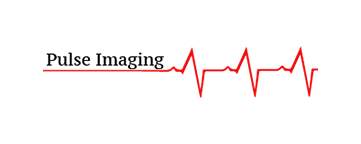X-Ray Sternum 2 Views
X-raying Basics
The sternum X-ray is an imaging exam usually ordered to detect injury from severe blunt trauma to the chest. The breastbone is a flat bone located in the middle of the chest. This structure is shaped like a T and forms the anterior aspect of the thorax, and encloses the thoracic cavity. It protects the internal cavities of the cavity, such as the esophagus, heart, main arteries, and lungs.
The sternum is divided into three sections:
●Manubrium: This is the sternum's uppermost section and connects to the clavicles at the sternoclavicular joint and attached to the first two ribs.
●Body; This is the middle portion and is attached to the rest of the ribs.
●Xiphoid process: This is the lower section of the bone. It provides an extension to the diaphragm and muscles of the anterior abdominal wall.
Why do you need an X-ray?
X-rays of the sternum are usually ordered to diagnose the extent of the injury after severe blunt trauma to the front of the body. The most common type of sternum fracture is found at the joint where the manubrium meets the body of the sternum. This is common in car accidents and similar situations. In such cases, it is usually found that the sternum has broken into several pieces, called a comminuted fracture.
Sternum fractures are also often found in cases of direct blows to the chest or deceleration injuries in vehicular accidents and after a patient has been resuscitated through CPR.
Fractures due to stress are sometimes reported in athletes and martial artists and also in patients with osteoporosis.
When do you need an X-ray?
Your doctor may order a sternum X-ray for a variety of reasons. Usually, it is used to diagnose fractures, fissures, or metastasis. It is also rarely used to confirm osteomyelitis, which is an infection of the bone.
A sternal X-ray is also used if you are exhibiting symptoms of other potentially associated injuries such as:
● rib fractures
● flail chest
● Pneumothorax
● Hemothorax
● pulmonary contusion
● blunt cardiac injury (manifested by dysrhythmias or murmurs)
● pericardial tamponade
● vascular injury
● head, neck, abdominal, or extremity trauma.
● Aortic rupture
Do you need to prepare for the X-ray?
There is no special preparation needed for a sternum X-ray. However, it is crucial to tell the X-ray technician if you are pregnant because of the potential risk of exposure on the developing fetus.
Before the procedure, you are required to remove your clothing and put on a hospital gown. Additionally, you will be asked to remove accessories and jewelry from the waist up, such as earrings, piercings, glasses, hairpins. You should also tell the X-ray technician if you have surgically implanted devices such as pacemakers or artificial heart valves.
What can you expect?
A typical X-ray imaging exam of the sternum consists of two views, a lateral view, and an oblique frontal view. Depending on what view your doctor has requested, the X-ray technician will position you for the view required.
For the lateral sternum view, the entire length of the sternum in the profile is examined. The technician will position you upright, with the side of your thorax adjacent to the image receptor and your arms behind your back. The technician may ask you to pull back your shoulders and keep your feet apart. This view is most valuable for detecting sternal fractures and determining the degree of displacement.
In the oblique sternum view, a frontal image of your entire sternum slightly rotated along the midline will be taken. The technician will position you lying horizontally on a table with your head turned and rotate you a few degrees to the right. Your doctor may order this jointly with a lateral view for a better image.
The X-ray technician may ask you to inhale gently while taking the X-ray for a better radiographic image.
What do your X-ray results mean?
Based on the findings from your X-rays and your condition, your doctor may order additional tests. If the results provide evidence of a fracture due to blunt trauma, your doctor might request a whole-body CT scan.
Additional tests are necessary since sternum fractures are not fatal, but the accompanying heart and lung injuries can be. Thus, your doctor may order a CT scan and ultrasound along with the X-ray.
Related X-rays: Chest PA View, Abdomen X ray, Chest 2V Front and Lat Oblique, Complete Chest 4V, Ribs in Chest Less than 3v, Ribs in Chest 4v
Frequently ordered together
X-Ray Chest PA And Lateral
X-Ray Chest PA
X-Ray Sternoclavicular Joint
X-Ray Chest 2V Front and Lat AP
X-Ray Chest 2V Front and Lat Oblique
X-Ray Sternoclavicular Joint min 3V
105.00$
150.00$
150.00$
150.00$
150.00$
150.00$















